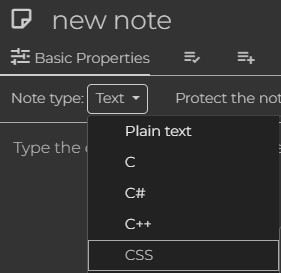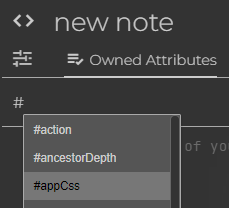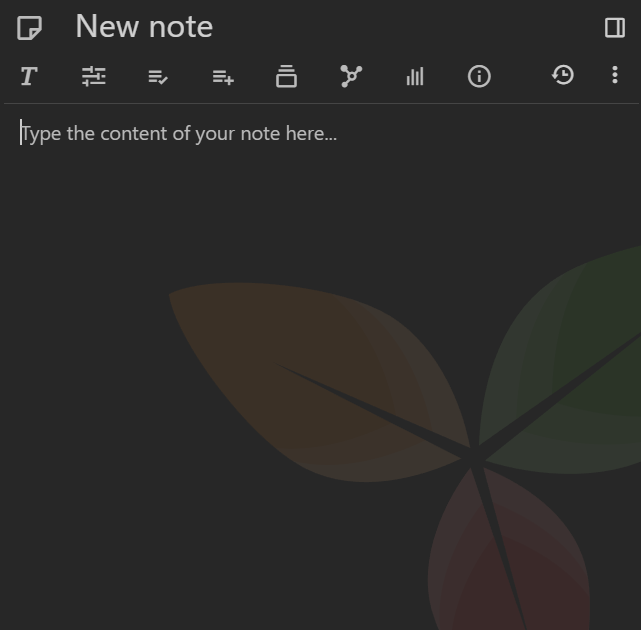Custom app-wide CSS
It is possible to provide a CSS file to be used regardless of the theme set by the user.
 |
Start by creating a new note and changing the note type to CSS |
 |
In the ribbon, press the “Owned Attributes” section and type #appCss. |
 |
Type the desired CSS. Generally it's a good idea to append !important for the styles that are being changed, in order to prevent other |
Seeing the changes#
Adding a new app CSS note or modifying an existing one does not immediately apply changes. To see the changes, press Ctrl+Shift+R to refresh the page first.
Sample use cases#
Customizing the printing stylesheet#
Per-workspace styles#
When using Workspaces, it can be helpful to create a visual distinction between notes in different workspaces.
To do so:
- In the note with
#workspace, add an inheritable attribute#cssClass(inheritable)with a value that uniquely identifies the workspace (saymy-workspace). - Anywhere in the note structure, create a CSS note with
#appCss.
Change the color of the icons in the Note Tree#
.fancytree-node.my-workspace.fancytree-custom-icon {
color: #ff0000;
}Change the color of the note title and the icon#
To change the color of the note title and the icon (above the content):
.note-split.my-workspace .note-icon-widget button.note-icon,
.note-split.my-workspace .note-title-widget input.note-title {
color: #ff0000;
}Add a watermark to the note content#

- Insert an image in any note and take the URL of the image.
- Use the following CSS, adjusting the
background-imageandwidthandheightto the desired values.
.note-split.my-workspace .scrolling-container:after {
position: fixed;
content: "";
background-image: url("/api/attachments/Rvm3zJNITQI1/image/logo.png");
background-size: contain;
background-position: center;
background-repeat: no-repeat;
width: 237px;
height: 44px;
bottom: 1em;
right: 1em;
opacity: 0.5;
z-index: 0;
}Limitations#
Some parts of the application can't be styled directly via custom CSS because they are rendered in an isolated mode (shadow DOM), more specifically:
- The slides in a Presentation.